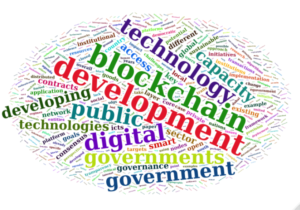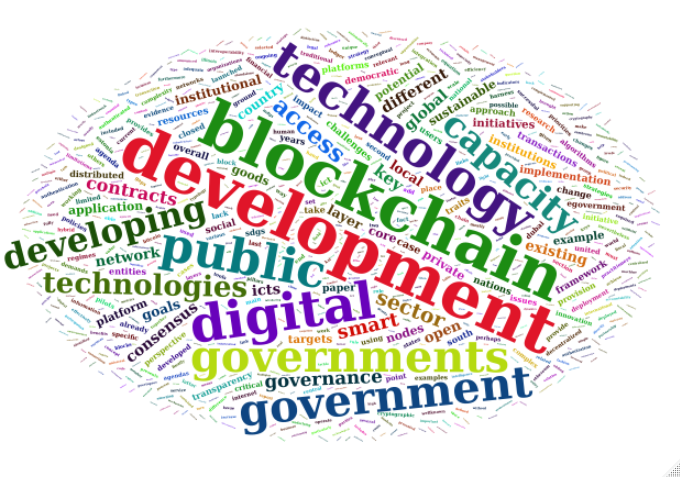My paper on blockchains for the public sector in developing countries has been published by Frontiers, one of the leading open-access and community-driven academic publishers.
The paper develops an analytical framework that combines sustainable development, state capacity and digital technologies. In principle, the framework can be used to explore the adoption of technologies and innovation in the public sector and is thus not limited to blockchains.
As the central focus of my research was governments, exploring ways to increase state capacity by building strong and resilient democratic institutions and deploying new technologies was on the table. Like Artificial Intelligence and Machine Learning, blockchain is a technology that works best at the application layer. That means that the technology can effectively change the way we work and how institutions operate. That is probably why some have called it an “institutional technology.” On the other hand, blockchains are not at their best when it comes to closing the so-called “digital divide” or sharing massive amounts of data and information.
While some still claim blockchains will do away with centralized institutions, current evidence suggests this is not bound to happen in the short or medium run and certainly not at the level of the state. A more possible scenario is the adoption of blockchains by the public sector to augment transparency and accountability while empowering non-state actors vis-a-vis de-democratization processes and counter the current rise of authoritarian regimes around the world. The other question here is if decentralized capitalism is not an oxymoron.
Serendipity played a role in the development of the paper. Back in June of 2018, I received an invitation from a former colleague to become a review editor for the Frontiers Blockchain for Good research initiative. In the Fall, I received an unexpected message requesting me to suggest a topic and provide an abstract for a paper. My proposal was accepted the following January.
I completed the paper in May but the ensuing peer-review was somehow delayed. I was a bit puzzled as, in the interim, I had already reviewed eight papers and four of them had already been published. I decided to poke around within Frontiers. I was informed that while the first reviewer had already completed the assignment, the second was missing in action. Finding a new reviewer became the main task. And that happened in a short time-span, fortunately. And as they say, the rest is history.
Cheers, Raúl


Comments
One response to “Blockchains in the Public Sector”